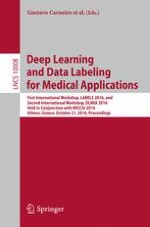2016 | OriginalPaper | Buchkapitel
Three-Dimensional CT Image Segmentation by Combining 2D Fully Convolutional Network with 3D Majority Voting
verfasst von : Xiangrong Zhou, Takaaki Ito, Ryosuke Takayama, Song Wang, Takeshi Hara, Hiroshi Fujita
Erschienen in: Deep Learning and Data Labeling for Medical Applications
Aktivieren Sie unsere intelligente Suche, um passende Fachinhalte oder Patente zu finden.
Wählen Sie Textabschnitte aus um mit Künstlicher Intelligenz passenden Patente zu finden. powered by
Markieren Sie Textabschnitte, um KI-gestützt weitere passende Inhalte zu finden. powered by
